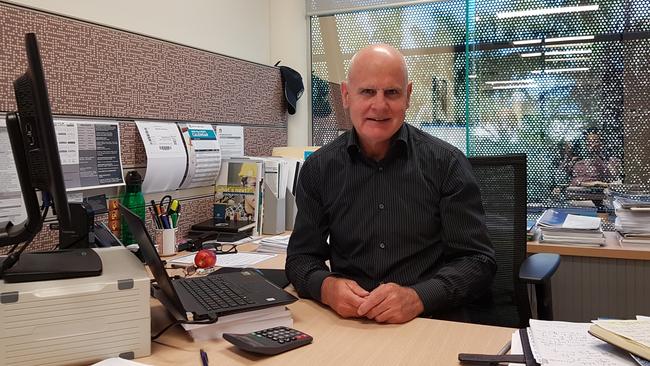Builders call for tax breaks as regional rentals dry up
The easiest way to tackle SA’s worsening rental crisis is to strip away the “eye-watering” amount of taxes and stamp duty, builders claim.
SA News
Don't miss out on the headlines from SA News. Followed categories will be added to My News.
Major reforms to the South Australian housing sector are needed to ease the escalating rental crisis, say industry leaders.
The Housing Industry Association (HIA) has called for taxation cuts to reduce the cost of building new homes while the Urban Development Institute of Australia (UDIA) wants more land released and greater urban infill.
HIA state executive director Stephen Knight said independent research had found government taxes, fees and charges made up almost one-third of the cost of a new house and land package.
The Centre for Economic Studies determined the total taxation and fees for a new house and land package in Sydney were 50 per cent of the cost while in Melbourne it was 37 per cent, Brisbane 32 per cent, Perth 33 per cent and Adelaide 29 per ent.
Mr Knight said this equated to $158,000 in South Australia for a package totalling $550,000.
“Even though we are at a lower level than some of the other cities, particularly Sydney, it is still an eye-watering amount,” he said.
“This is outrageous. We need to have a plan to bring it down.
“Reducing or replacing state stamp duty would be a good place to start, other states are already looking at this.”
Mr Knight said with the cost of building constantly increasing, the “tax component continues to rise with it”.

“This is a windfall for the government with no real gains to the new homeowner,” he said.
“All that happens is the opportunity for those on low and medium incomes who struggle to meet the deposit gap to own their own home just gets further and further away. It is no wonder that some families just give up.”
UDIA chief executive Pat Gerace said the growing demand for housing, particularly rental properties, made it imperative to increase supply.
“The fact is people need a house and the answer is we need more houses,” he said
“That’s unfortunately not something we can do quickly, but one of the things we’ve been saying for some time.
“Increasing supply is the only way to fix this, not just capping rents, vacancy taxes or other band-aid solutions.”
Mr Gerace said there needed to be “broader macro-economic policy reform to enable a bigger build rather than small scale responses”.
“Government needs to get on and do all it can to increase the overall supply of housing that will put downward pressure on prices and reduce the scarcity of rental properties,” he said.
Property Council SA director Daniel Gannon agreed, saying there were “no benefits in market intervention for property owners and investors who take great risks to purchase, own and provide homes for renters”.
“Instead of focusing on rent caps and additional property taxes, we should be more focused on increasing the supply of housing across South Australia, starting with high-rise living in and around the CBD,” he said.
“If there are projects in the pipeline or parcels of land that require rezoning or approval, they should be an urgent priority to get shovels in the ground and affordable apartments in the sky.
“While there are supply chain blockages and other market challenges like securing workforce talent, let’s focus on what we can control – land supply and approvals.”
Mr Gannon said the state government should call an emergency housing summit to find solutions to the crisis which is growing worse by the day.
Regional rentals are drying up
Rental vacancies in regional areas of South Australia have reached record lows, says a housing lobby group.
According to Everybody’s Home, there was only one property available last week on Kangaroo Island out of 748 listed rentals, 24 out of 18,884 in the Murraylands and nine out of 7627 on Yorke Peninsula and Mid-North.
Spokeswoman Kate Colvin said a survey showed regional vacancy rates were below 0.5 per cent, while rents had increased by up to 17 per cent.
“Renters are in for a seriously difficult time as landlords capitalise on historically low vacancy rates to shift the rising cost of interest rates on to their tenants,” she said.
The regional rental crisis was discussed by country mayors and council chief executives at a Local Government Association forum last week.
A LGA spokeswoman said regional councils would continue to raise housing shortages with the government.
“We’ll continue working on proposals for improvements in … public housing, regional plans, effective case management and funding for essential infrastructure,” she said.





